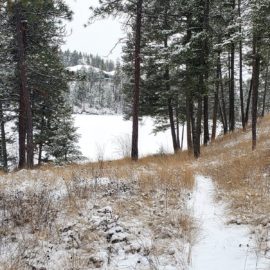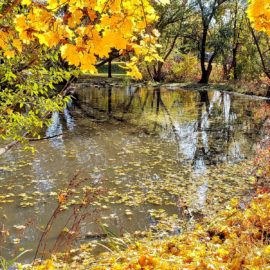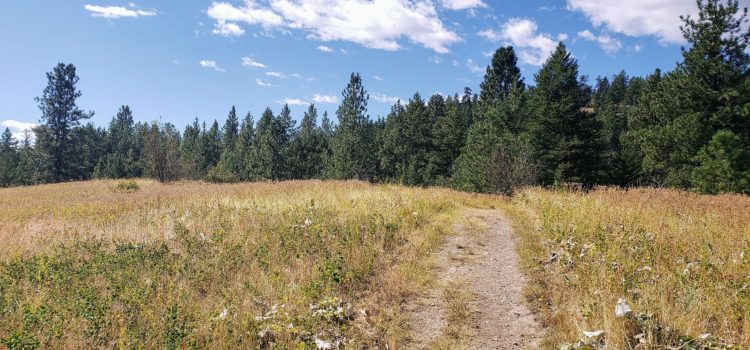
Kelowna Parks Challenge – Trip #42
This week, as part of my Kelowna Parks Challenge, I explored four parks in the northern part of Kelowna, on both sides of the north end of the Glenmore Valley. I saw two parks on Quail Ridge and two parks on Coyote Ridge, including the fabulous Stephens Coyote Ridge Regional Park.
Read on for my impressions and reflections.
The Trip
This adventure was a chance for me to explore more of the rural areas of northern Kelowna. On previous trips, I visited Mill Creek regional park in the northeast corner of the city and McKinley Landing in the northwest, but that still left a big piece in between them.
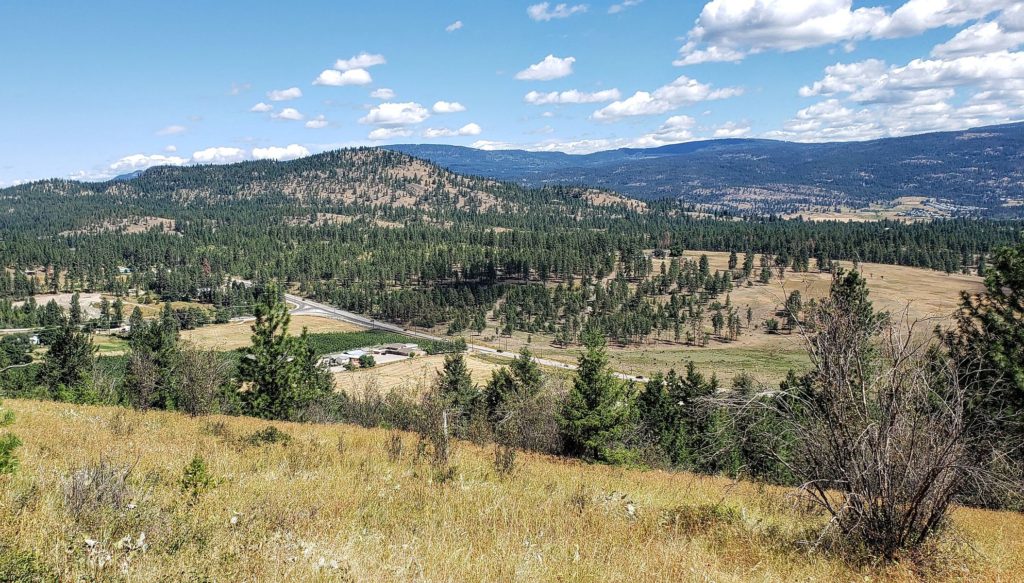
Until the creation of the Regional District of the Central Okanagan in 1967 and the amalgamation of the City of Kelowna in 1973, the territory I explored this week was an unincorporated interurban area, not part of any local municipality. Both of the rural ridges I found myself on were undeveloped ranches for most of the twentieth century. In the last decade of that century, they each took different paths.
Quail Ridge
Quail Ridge, which runs north from what is now UBC’s Okanagan campus, was formerly part of the TC Ranch, named for Tom Carney, who bought it in 1925. The ranch, a remnant of which is still owned by the Carney family, used to stretch from the highway in the east to what is now the Glenmore Landfill on the west. In the 1980s, a large part of the ranch was bought by the Pier Mac Petroleum Company and plans for its development were made. Eventually, in the 1990s, the Quail Ridge neighbourhood was built, one of the first of Kelowna’s neighbourhoods to be built with an integrated golf course.
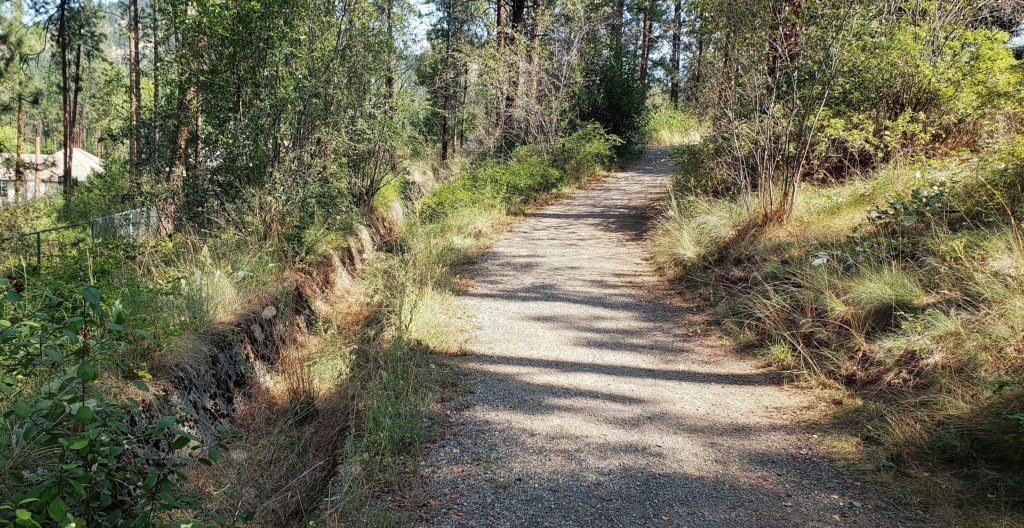
In this case, the Okanagan Golf Club operates two courses, Bear and Quail, one on each side of the ridge. Between them, on the height of land, is located the residential subdivision. This ensures that residents not only have a golf course just down the hill from them but also a great view. As in any subdivision, neighbourhood parks were included in the design, and both Quail Place and Carney Parks are excellent examples.
Coyote Ridge
Like its opposite on the other side of the Glenmore Valley, Coyote Ridge was a rural property up until it was included in Kelowna’s 1973 boundary extension. Unlike that other ridge, however, this one was never developed. Shortly after amalgamation, the crown land that makes up most of the park was considered as a future park, but it wasn’t until the 1990s, thanks to a land donation from Kay Stephens, after whom the park is now named, that a regional park there was officially formed.
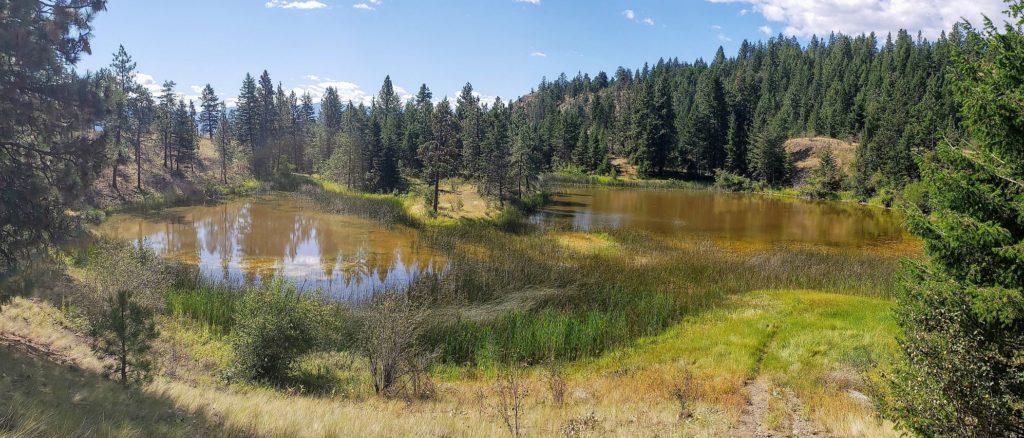
To this day, other than the creation of the North Glenmore Dog Park beside the trailhead, very little has been done to modify existing conditions in this park. The trails on Coyote Ridge were clearly not built by the RDCO. They appear to have been created through repeated use by short-axled four-wheel vehicles, though motorized vehicles are now banned there. Today it is a wonderful, relatively untouched place to go for a hike, featuring three successive ridges with amazing views as well as precious wetlands in the valleys between.
Quail Place Park
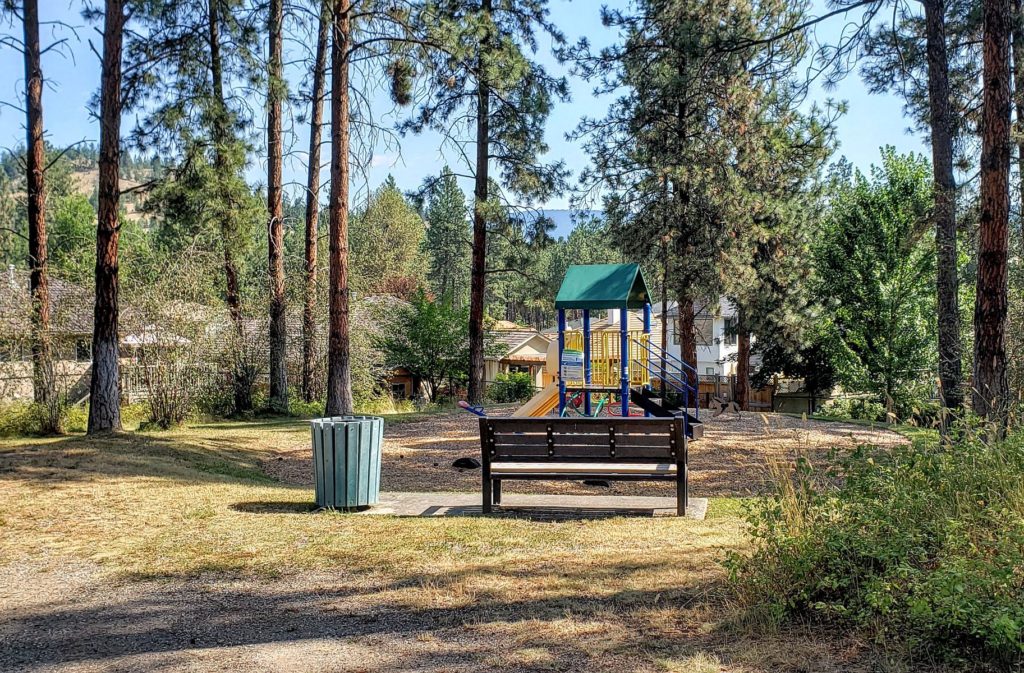
This charming park sits at the north end of the Quail Flume Trail, a footpath that follows an old concrete flume that was used by the Glenmore Ellison Irrigation District to bring Mill Creek water to agriculturalists in Glenmore.
The main part of the park can only be reached by a few metres of the trail and sits hidden behind local backyards. The “secret” playground here makes for a safe place to bring young kids.
Washrooms and Drinking Fountains: There is no drinking fountain in this park. There is no washroom in this park.
Dog Rules: Because it is mostly a playground, dogs are not allowed in this park.
Carney Park
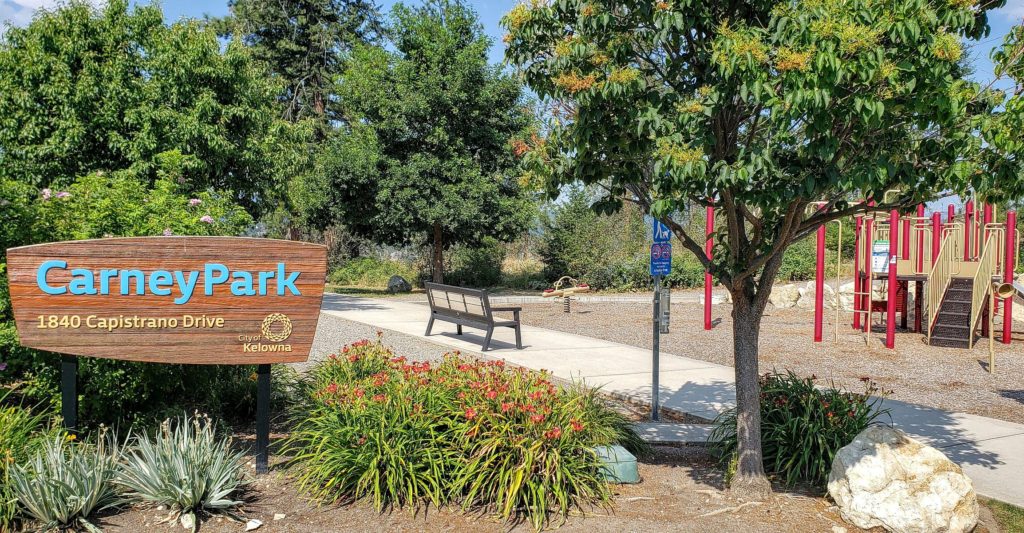
Carney Park is located at the top of Quail Ridge. In addition to a beautifully-designed and manicured modern play space, it also includes a rustic trail that makes a loop around the preserved woodland on the highest point of the ridge.
In the lower space, there is a playground, several benches, and a spacious lawn; while the upper area gives great views of the surrounding territory.
Washrooms and Drinking Fountains: There is no drinking fountain in this park. There is no washroom in this park.
Dog Rules: Dogs are allowed in this park, but them must be on-leash and stay on trails. They are not allowed near the playground.
North Glenmore Dog Park

This dog park is in a rural location, much like the one in Ellison, which means it has a lot of room for dogs to run. This property mostly comprises a grassy hillside, unbroken by shrubs or trees.
There are parking lots and entrances at the north and south end of this park. At the north end, trees have been planted and a seating area has been installed. Signs advise that you can bring your own seating to the park, but if you leave it there over night it will be confiscated.
Washrooms and Drinking Fountains: There is no drinking fountain in this park. There is a portable washroom in this park by the north parking lot.
Dog Rules: Dogs are allowed off-leash in this park.
Stephens Coyote Ridge Regional Park
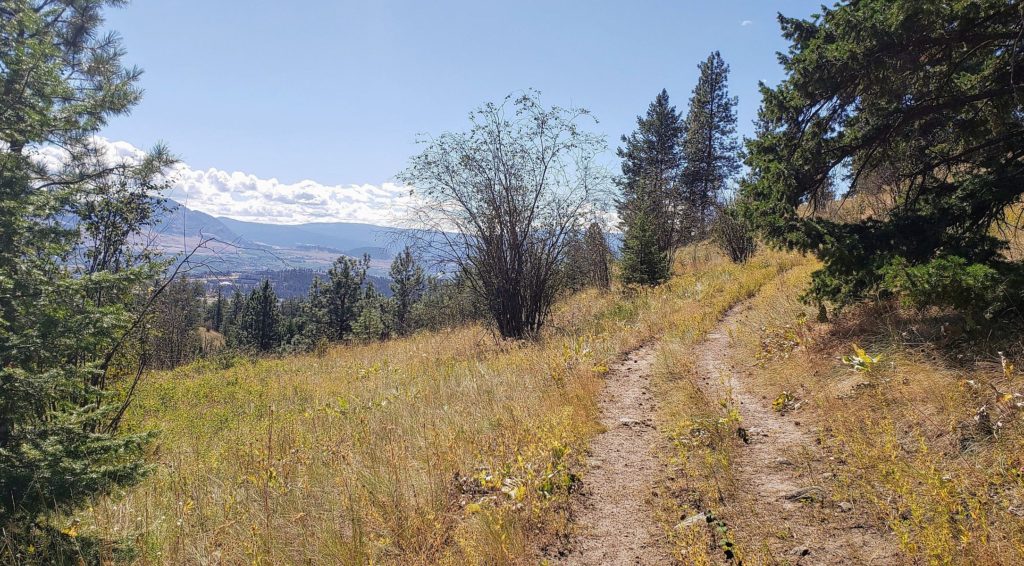
This park is a fabulous local destination for day hiking. Though its trails are not professionally made, and there is no signage to help you navigate the trail network, most of the paths are easy to find and lead to geographically sensible destinations.
Ridges and valleys make up the main features of this park, so sights of note include the views from the tops of the ridges, as well as ponds and lakes, such as Lightblue Lake. The trail network in this park connects unofficially to the informal network of trails north of Hidden Lake in Wilden.
Washrooms and Drinking Fountains: There is no drinking fountain in this park. There is a portable washroom in this park by the entrance.
Dog Rules: Dogs are allowed in this park, but them must be on-leash and stay on trails.
Reflections
This week’s “neighbourhood” taught me a lot about how the areas around Kelowna changed in the second half of the twentieth century, first with the creation of the regional district in the 60s, then with the boundary extension in the 70s, and finally with the acceleration of suburban development in the 90s. Both of the ridges I explored started off in the same state, but ended up different today. In both cases, though, it was due to the same pressures. As much as I love the natural feeling of undeveloped parks, I also understand that many of them only get formalized due to development pressure.

Other than McKinley Landing, perhaps, Quail Ridge is the most northerly of Kelowna’s residential subdivisions. It only connects with the local road network on its east side, so it, too, feels like an isolated location. I suppose it would not feel so remote if you were living there and travelling to and from the airport or university every day. For me, it felt like a long way out because I was starting downtown.
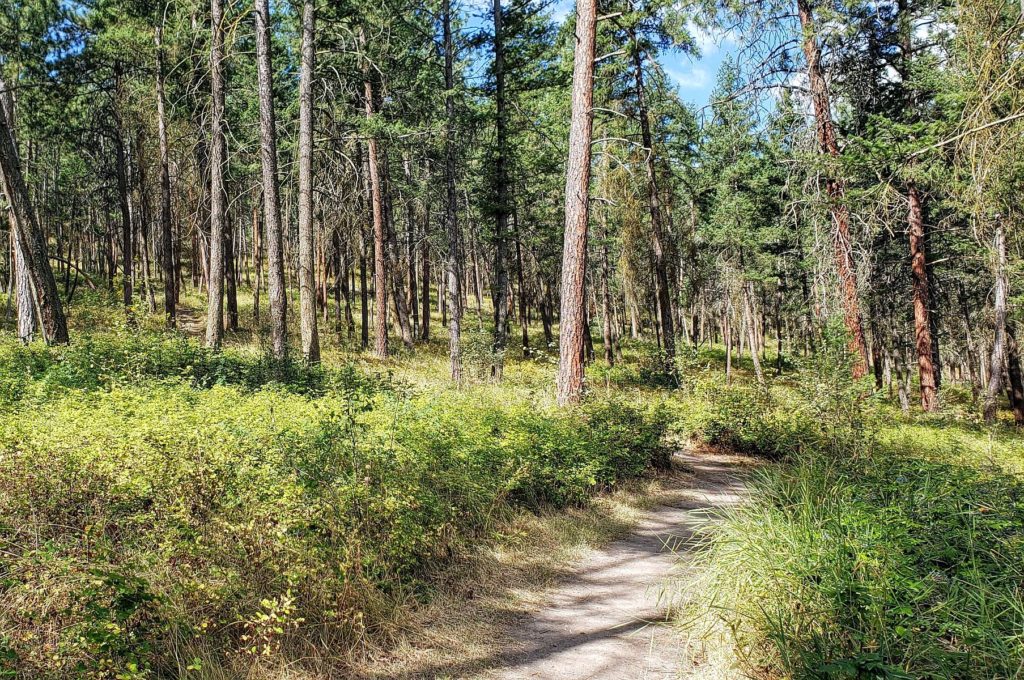
Stephens Coyote Ridge was a wonderful place to ramble and explore and I intend to go back and see more of it. Because there are no officially designated trails yet, and existing maps vary as to which trails they bother to show, I can’t say I didn’t see all of the official trails. Nevertheless, after three hours of hiking in the park, I had only explored a quarter to a third of it. In particular, I regret not having the time or energy to reach Lightblue Lake, which will be my first goal on a return trip.
Conclusions
With the addition of this week’s four parks, I have now seen one hundred and eighty of the two hundred and three parks on my Official List in three hundred twenty-four days, or 88% of the parks in 88% of the days. As expected, I am still on pace. I feel like I fudged things a bit not exploring every hectare of Coyote Ridge, but I am confident I saw enough to get a good impression and I know a return trip will make for a good post in the future.
I hope you enjoyed reading and learning about these Kelowna parks. As I get into farther-flung areas, I feel like the chances people have been to them go down. Do you think that’s true, or are people less likely to visit neighbourhood parks that aren’t right down the street? Either way, I hope you like to learn about them, and I hope you will come back next week to see where else I go on my dwindling list of remaining parks!


